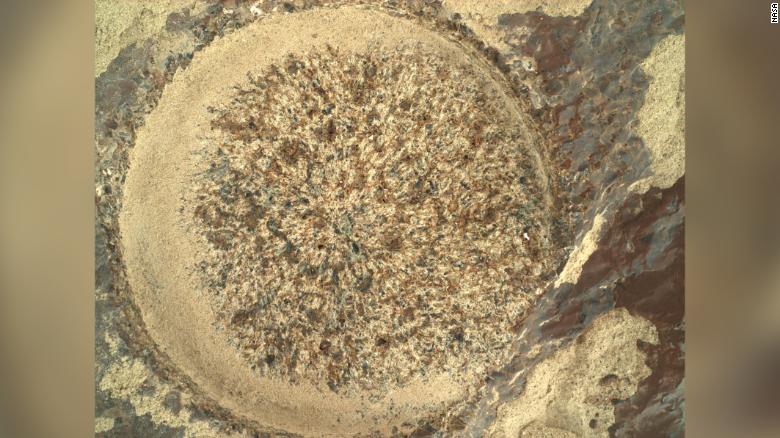(CNN) – The persistent rover took a well-deserved rest in October during Solar conjunction, but returned to investigate the intriguing rocks in Jezero crater on Mars.
Solar conjunction, the period when the Sun is between Earth and Mars, began on October 2, disrupting NASA’s communications with the rover. This blackout ended on October 19, and the perseverance returned to search for signs of ancient life on the Red Planet.

Perseverance is scraping rocks to reveal things that humans have never seen before on another planet.
One of the rover’s main goals is to collect rock and soil samples from Mars that will be brought back to Earth for future missions. actually Two samples were collected He has the help of an Ingenuity helicopter, serving as an aerial scout, to find his next sampling-worthy targets.
Since October 25, the Perseverance rover has been investigating some rock formations in the southern Séítah region of the planet, which are of interest to the rover’s science team on Earth. The rover has a tool on its robotic arm that can scrape rock layers to peek inside.
“These types of rocks usually form in water and may contain clues about the environment they were in. Let’s see if this is another good place for #SamplingMars (sampling from Mars),” read a post from the rover’s Facebook account, which it manages NASA, on November 4.
After scraping the rocks, the probe sent out images to show what was beneath the rusty upper layer – what appeared to be a collection of granular minerals and sediments.
“Look inside to see something no one has seen before. I broke a small part of this rock to remove the top layer and see what’s underneath. Focusing on the next #SamplingMars goal,” the Perseverance Facebook account posted on November 9.

This is what the Martian rock looked like after the rover used its erosion tool, to detect potential minerals in the rock.
The mineral content of the rocks at Jezero Crater, which housed a lake 3.7 billion years ago, acts like an ancient, undisturbed time capsule. The minerals can tell scientists how the rocks formed and what the climate was like at the time. This can provide an overview of what the lake and river delta looked like when the planet was hotter, wetter, and potentially habitable.
Perseverance appears to be preparing to collect a sample of frozen rock to see what the mysteries of southern Mars may reveal.

NASA’s Perseverance rover approaches the rocks of Mars.
“Perseverance and his team have come a long way during the last eight months of operation on Mars,” David Pedersen, a research associate for the PIXL rover instrument at the Technical University of Denmark, wrote in a recent post on the Perseverance blog.
“Now, collecting rock samples and performing proximity sciences using turret-mounted instruments at the end of the robotic arm/manipulator arm is part of the normal mission routine.”

“Problem solver. Proud twitter specialist. Travel aficionado. Introvert. Coffee trailblazer. Professional zombie ninja. Extreme gamer.”




More Stories
With a surprise in the case: a strange cell phone from Nokia was introduced
PlayStation Stars: what it is, how it works and what it offers to its users | Sony | video games | tdex | revtli | the answers
t3n – Digital Pioneers | digital business magazine